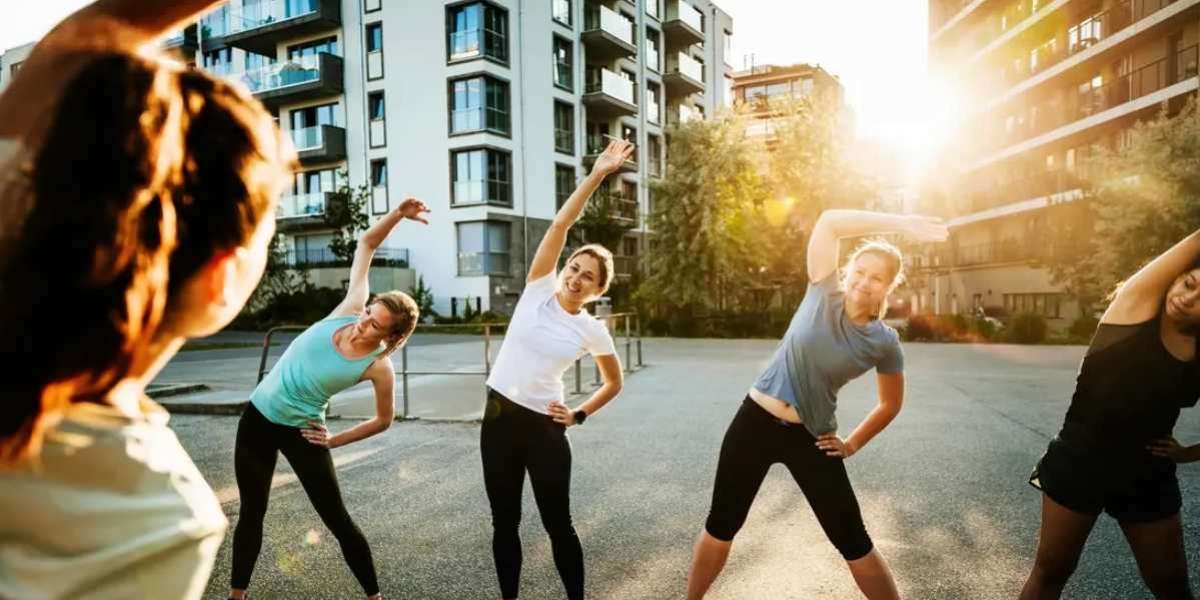It’s no secret that stretching is an important part of exercise. It ensures your body is loose and ready for the upcoming activity. Stretching also helps overall performance and prevents injuries during whatever activity you choose to do. But did you know that different types of stretching can give you different benefits?
The latest recommendations have evolved as stretching has become more mainstream over the past decade. You may have heard that dynamic stretching is preferable to static stretching. But this depends on your goals.
“We always talk about warming up and cooling down in relation to exercise,” says Anne Rex, DO. “Dynamic stretching is a great addition to the warm-up process and pre-exercise routine.”
What exactly is dynamic stretching, how is it different from static stretching and what’s the best way to incorporate them into your routine? We spoke with Dr. Rex about the ins and outs of the best ways to stretch and what it means for your body.
What’s the difference between dynamic and static stretching?
Dynamic stretching and static stretching are at different ends of the spectrum of stretching techniques. While dynamic stretching is based on movement, static stretching involves moving a joint as far as it can go and holding it for a length of time, typically 30 to 90 seconds.
What is dynamic stretching?
Dr. Rex explains that dynamic stretching involves actively moving joints and muscles with sports-specific motions for 10 to 12 repetitions, targeting certain muscle groups. Note: This isn’t the same as active stretching.
“Dynamic stretching mimics the activity or the movement that you’re going to do in whatever sport or activity you’re about to start,” she further explains. “It helps rehearse the movement patterns so the muscles tend to get excited a little bit earlier and faster, which can help improve power and increase coordination.”
In fact, dynamic stretching has been shown to acutely increase power, sprint, jump and improve performance.
“In terms of warming up, when you’re actively moving the muscles, you’re improving blood flow circulation,” she adds. “It increases muscle temperature, which then reduces the resistance and increases the flexibility.”
What is static stretching?
Static stretching is different. In static stretching (not to be confused with passive stretching), you hold a pose while stretching your muscles as far as you can. You remain “static,” so to speak, for typically 60 to 90 seconds.
“When you’re static stretching,” Dr. Rex says, “the muscles aren’t warmed up. It’s really more of a relaxation movement. So, static stretching works well as part of the cooldown process.”
Is dynamic stretching or static stretching better?
So, is one better than the other? It mostly depends on when you’re doing the stretches.
According to Dr. Rex, static stretching fell out of favor as a warm-up routine recently. A 2019 research study found that static stretching had some negative effects on performance, like reducing maximal strength, power and performance after a single bout of a static stretch.
“There’s still absolutely a role for static stretching,” she clarifies. “But the longer you stretch, the more there will be a negative impact on performance. So, if it’s part of a complete dynamic warm-up, you’d hold the stretch for around 15 to 30 seconds, not 60 to 90 seconds.”
She adds that static stretching after exercise can also help prevent post-workout stiffness because it can help put muscles back at their pre-exercise length.
That said, Dr. Rex also notes that static stretching may work its magic best when used in combination with other types of stretches. “Static stretching can still be a very effective way to stretch and increase the range of motion of a joint, and it can be used in a short duration stretch as part of a complete dynamic warm-up.”
Pros and cons of dynamic stretching
Here are some pros and cons of dynamic stretching:
Pros
- Increases blood flow and heart rate.
- Improves flexibility and mobility.
- Enhances athletic performance.
- Reduces risk of injury.
Cons
- May not be suitable for everyone, depending on your range of motion or physical ability.
- May not fully prepare for high-intensity activities.
Pros and cons of static stretching
Here are some pros and cons of static stretching:
Pros
- Increases flexibility.
- Reduces muscle tension.
- Improves posture.
- May promote relaxation and stress relief.
Cons
- May decrease muscle power and performance.
- May cause overstretching and injury.
- May not be effective for warming up.
- Not suitable for acute injuries.
Dynamic stretching examples
Ready to try some dynamic stretches? Here are some examples and how to do them.
Leg pendulum
The leg pendulum is what it sounds like. It involves swinging each leg back and forth 10 to 12 times. You can also do this by swinging your leg side-to-side.
Here’s how to do the leg pendulum dynamic stretch:
- Stand next to a stable object like a chair or wall for support.
- Shift your weight onto one leg and slightly bend that knee.
- Swing the opposite leg forward and backward like a pendulum, keeping it relaxed.
- Gradually increase the range of motion as you swing your leg.
- Repeat on the other side.
Walking lunges
A classic for many, the walking lunge stretches your calves, hamstrings and thigh muscles.
Here’s how to do a walking lunge:
- Start standing with your feet hip-width apart and your hands on your hips.
- Take a big step forward with one foot and lower your body until both knees are bent at a 90-degree angle.
- Keep your front knee aligned with your ankle and your back knee hovering just above the ground.
- Push off your front foot to step forward into the next lunge.
- Continue alternating legs as you walk forward.
You can also do walking lunges while twisting your torso, giving your lower back more of a stretch.
Small hip circles
Bring it around town!
Here’s how to do small hip circles:
- Stand with your feet hip-width apart and place your hands on your hips for support.
- Begin by gently rotating your hips in a circular motion, moving from front to back.
- Keep the movement small and controlled, focusing on loosening up the hip joints.
- After several repetitions, switch directions and rotate your hips in the opposite direction.
- You can gradually increase the size of the circles as your hips start to loosen up.
Static stretching examples
Here are some examples of static stretches and how to do them:
Hamstring stretch
- Sit on the floor with one leg extended straight out in front of you and the other bent, with that foot resting near the straight leg’s thigh.
- Lean forward from your hips and reach towards your toes on the extended leg, hinging at the hips and keeping your back straight.
- Hold the stretch for 30 to 90 seconds, feeling a gentle pull along the back of your thigh.
- Repeat on the other side.
Calf stretch
- Stand facing a wall with your hands against it at shoulder height.
- Step one foot back and press your heel into the ground, keeping your back leg straight.
- Lean forward slightly until you feel a stretch in your calf.
- Hold the stretch for 30 to 90 seconds, then switch legs.
Triceps stretch
- Reach one arm overhead and bend your elbow, bringing your hand down towards the middle of your back.
- Use your other hand to gently push on the elbow of your bent arm.
- Feel a stretch along the back of your upper arm.
- Hold the stretch for 30 to 90 seconds, then switch arms.
Quad stretch
If your workout involves a lot of running, jumping or squatting, a quad stretch may help alleviate any tightness or tension in your muscles.
Here’s how to do a quad stretch:
- Stand on one leg and bring your other foot towards your buttocks, grabbing your ankle with your hand. (You can use your other hand to balance on a wall or the back of a chair, if needed.)
- Keep your knees close together as you gently pull your foot towards your buttocks until you feel a stretch in the front of your thigh.
- Hold the stretch for 30 to 90 seconds, then switch legs.
Shoulder stretch
- Bring one arm straight across your body at chest height.
- Use your other hand to press gently on the forearm of your outstretched arm.
- Feel a stretch in the back of your shoulder.
- Hold the stretch for 30 to 90 seconds, then switch arms.
The bottom line
Both dynamic and static stretching have a place in your fitness and mobility routine. Warming up your muscles and joints and keeping them flexible are important parts of reducing your risk of injury, increasing your athletic performance and keeping you limber as you go about your daily activities.








